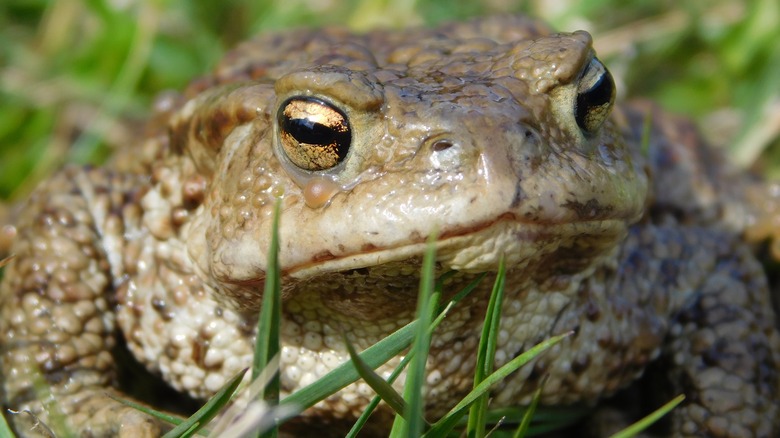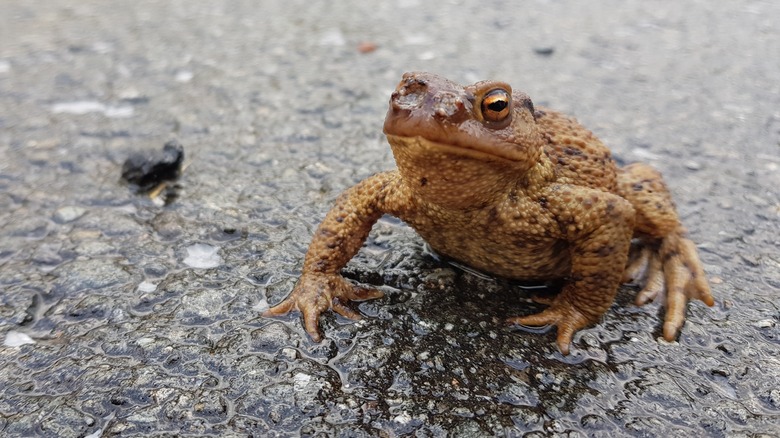The National Park Service Issues Warning Against Toad-Licking For A Psychedelic Trip
When you enter a national park, you often see a sign that says, "Please don't feed the animals." However, in a recent turn of events, According to an October 31 Facebook post, the National Park Service warned people to refrain from licking the toads to consume their secretions. The Sonoran desert toad, also known as the Colorado River toad, omits a toxin that is believed to give you a psychedelic trip.
As it turns out, there's a huge market for this toad's toxins. According to the New York Times, people have dried the toxins to smoke them during retreat ceremonies. Some of these retreats charge upwards of $8,500 for the experience. The substance — sometimes called Bufo or Five — is a potent hallucinogenic that produces a 15 to 30-minute high. Although use of this substance is illegal in the United States, it is legal in Mexico. Some credit the dried secretions with the ability to relieve their depression and anxiety, but toxins in the toad's secretion can be fatal. One photographer died in 2020 from the toxin.
The potential negative effects
According to Drug Science, the toad's secretion contains the potent hallucinogenic called 5-MeO-DMT. This substance operates in the body similarly to the serotonin neurotransmitter. Not only can it induce hallucination, but it also can cause a rapid heart rate, nausea, and chest pressure. Some people experience panic attacks, sleep problems, and anxiety after taking the substance. Although 5-MeO-DMT can be euphoric, it can also produce psychological scars that can last for several weeks. People with schizophrenia or psychosis might aggravate their condition.
The Sonoran desert toad lives mostly in Central Arizona, New Mexico, and Mexico, according to the Arizona-Sonora Desert Museum. It secretes the toxin as a defense mechanism against predators. Animals can get sick from harassing them, and the toxin can even be potent enough to kill a dog. The New York Times says that people are poaching, harvesting, and trafficking the toads, which could pose a threat to the toad population. Breeding them illegally can lead to an outbreak of chytrid fungus, which could wipe out amphibians.


